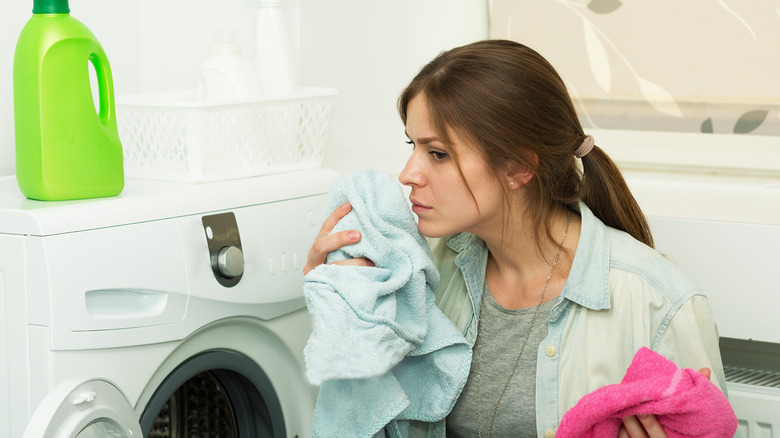The Common Laundry Mistake That Can Lead To A Household Mold Problem
Most household mold is found behind the walls, in the ceiling, or areas where water damage has occured. However, one of the most unexpected places where mold may be lurking in your home is actually in the heap of clothes in your laundry basket. Yes, believe it or not, one of the most common causes of mold growth in the home comes from wet clothing. Whether you accidentally leave your wet laundry in the washer overnight or throw a pile of damp garments in the hamper without hanging them to dry first, you create an opportunity for bacteria to thrive. Mold and mildew can begin to grow and spread within 24 hours. Eventually, this could cause a more serious mold problem to take root.
It may be a common problem, but mold can be harmful in many ways. Mold is capable of damaging fabric, and it can be harmful to the skin, exacerbate allergies, and lead to health problems. When mold seeps into surrounding surfaces, it can deteriorate materials such as drywall and insulation. Needless to say, you don't want to take any chances with wet clothes. Let's go over the various ways to detect mold and mildew on wet clothing, and the steps you can take right away to stop the spread right in its tracks.
How wet clothes can lead to mold growth in your home
Mold releases spores in damp environments that lack ventilation, which makes a heap of wet clothes the perfect breeding ground. Particularly in the warmer months, leaving damp garments unattended for more than a day could cause mold and mildew to develop. If left long enough, it could eventually spread to the surrounding walls, floors, and areas of the home.
It doesn't take much effort to detect mold, as the sight and smell is usually unmistakable. Mold on fabrics typically forms as white, green, gray, or black spots. If the culprit is mildew, the surface of the clothing will be covered in a fuzzy white or gray substance. Mold and mildew are accompanied by an off-putting stale or musty odor. If caught early enough, you will likely be able to get the clothes back to their original condition. However, the mycotoxins in mold could damage the material over time and, more concerning, cause skin irritation, allergies, and respiratory issues.
Once you've detected the problem, it's important to move all of the affected items outside to prevent further spread and to ventilate the area to get rid of the mildew smell. Be sure to wear a mask and gloves when dealing with mold to avoid ingesting the toxins. If the mold has spread to other areas, like drywall, for example, wipe it away with a cloth and store-bought mold cleaner or white vinegar mixed with water. To salvage your clothes, brush off any visible mold and soak in diluted white vinegar before washing in hot water. Allow your clothes to dry in sunlight.

